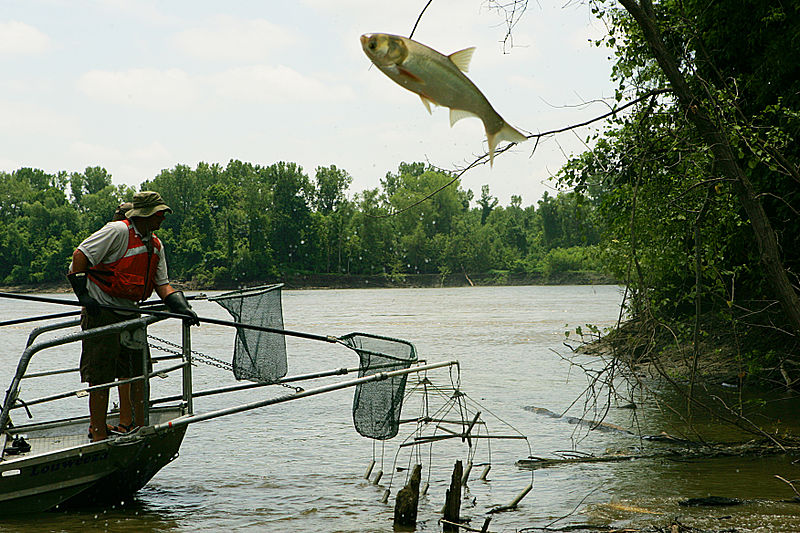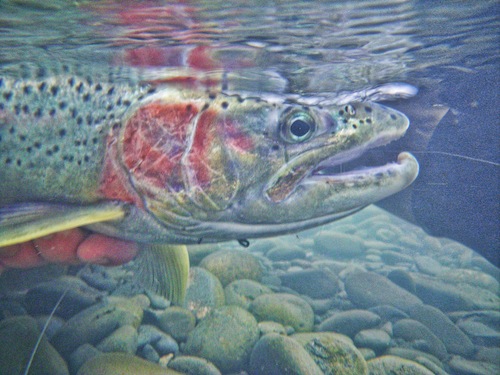Plushblob
 Saturday, March 22, 2014 at 12:00AM
Saturday, March 22, 2014 at 12:00AM  blobfish,
blobfish,  fish in the news in
fish in the news in  Weird
Weird  Saturday, March 22, 2014 at 12:00AM
Saturday, March 22, 2014 at 12:00AM  blobfish,
blobfish,  fish in the news in
fish in the news in  Weird
Weird  Friday, March 21, 2014 at 12:00AM
Friday, March 21, 2014 at 12:00AM 
According to Timothy Male the United States is spending too much to save salmon.
In 2011 spending by all federal agencies on chinook salmon was greater than the amount spent by the U.S. Fish and Wildlife Service trying to recover all of the more than 1,400 other species on America’s endangered species list.
LINK (via:The Seattle Times)
 fish in the news,
fish in the news,  save our wild salmon in
save our wild salmon in  Environment,
Environment,  Species
Species  Tuesday, March 18, 2014 at 12:00AM
Tuesday, March 18, 2014 at 12:00AM Photo: Saberwyn
Fish protections, irrigator access and hydro power generation are chief among the concerns at the mid-Columbia River’s Wanapum Dam, where on Feb. 27 a 65-foot long horizontal crack was discovered at one of the facility’s 12 spillways.
Fish biologists, engineers, and stakeholders are developing plans to modify the two fish ladders at Wanapum Dam to allow migrating salmon and steelhead to safely pass the dam when the adult spring Chinook salmon run begins in mid-April. Over the course of the spring, summer and fall, Chinook, coho and sockeye salmon, steelhead, bull trout, lamprey, shad and other fish species pass over the dam. Wild spring Chinook and steelhead stocks, as well as bull trout, are protected under the Endangered Species Act.
Such ladder fixes could include the installation of a water pumping system to feed the ladders and potentially some sort of slide to ease the fishes’ exit into the Wanapum pool.
The utility is also evaluating plans for capturing and transporting adult fish around the reservoir.
LINK (via: The Dalles Chronicle)
 damnation,
damnation,  fish in the news,
fish in the news,  save our wild salmon in
save our wild salmon in  Dams,
Dams,  News
News  Sunday, March 16, 2014 at 12:00AM
Sunday, March 16, 2014 at 12:00AM  Photo:USFWS
Photo:USFWS
The eggs and late-stage embryos of bighead or silver carp have been found in the Mississippi River near Lynxville in Crawford County — 250 miles north of any previously known reproducing population for the invasive carp.
The finding is the latest sign that the destructive fish are slowly moving up the Mississippi River basin and into inland waters of the Midwest.
 asian carp,
asian carp,  fish in the news,
fish in the news,  invasive species in
invasive species in  News,
News,  Species
Species  Friday, March 14, 2014 at 12:00AM
Friday, March 14, 2014 at 12:00AM 
Starting next month, millions of young California salmon could be migrating to the ocean in tanker trucks instead of swimming downstream in the Sacramento River
State and federal wildlife officials have announced a plan to move hatchery-raised salmon by truck in the event the state’s ongoing drought makes the Sacramento River and its tributaries inhospitable for the fish. They fear the rivers could become too shallow and warm to sustain salmon trying to migrate to sea on their own.
The trucking plan, devised by the state and federal fisheries agencies, includes a series of triggers, based on river and water supply conditions, that would launch a massive operation to haul the salmon in tanker trucks on a nearly three-hour drive from Red Bluff to San Pablo Bay near Vallejo.
LINK (via: Sacremento Bee)
Unfortunately there is science that suggests transporting juvenile salmon hinders adult migration.
 fish in the news,
fish in the news,  fish mobiles,
fish mobiles,  save our wild salmon in
save our wild salmon in  News
News  Monday, March 10, 2014 at 12:00AM
Monday, March 10, 2014 at 12:00AM 
The Idaho Department of Fish and Game, in collaboration with Nez Perce Tribal Fisheries Research Division, has been tracking steelhead bound for the South Fork Clearwater River since September with the primary objective of trying to better understand how steelhead move and use the river system and what causes them to move. It is especially important to learn how wild steelhead move through the river differently than the hatchery fish.
LINK (via:The Fish Ladder)
 fish in the news,
fish in the news,  hatchery fish vs wild fish in
hatchery fish vs wild fish in  Science,
Science,  Species
Species